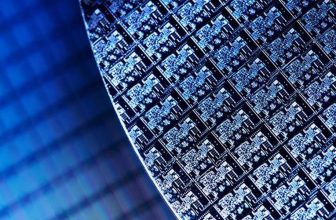The LED packaging method is to connect the chip (Die) with its heat dissipation substrate Submount (submount technology) by wire bonding, eutectic or flip chip packaging technology to form an LED chip, and then fix the chip on the system board and connect it to form a light source module. Group.
At present, LED packaging methods can be roughly divided into lens-type and reflector-type. The molding of the lens can be molding or lens bonding; while the reflector-type chip is more It consists of glue mixing, dispensing, and packaging; in recent years, epitaxy, die-bonding, and packaging design have gradually matured, and the chip size and structure of LEDs have been miniaturized year by year. The power of a high-power single chip can reach 1~3W, or even more than 3W. As the power of LEDs continues to increase, the heat dissipation and heat resistance requirements for LED chip boards and system circuit boards are becoming increasingly stringent.
In view of the comprehensive considerations of insulation, voltage resistance, heat dissipation and heat resistance, ceramic substrates have become one of the important materials for chip sub-attachment technology. Its technology can be divided into thick film process (Thick film), low temperature co-fired process (LTCC) and thin film process (DPC). However, the thick film process and low-temperature co-firing process use screen printing technology and high-temperature process for sintering, which are prone to rough lines, inaccurate alignment, and shrinkage ratio problems. For high-power LED products with increasingly fine lines, or Especially for LED products produced by eutectic or flip-chip processes that require accurate alignment, thick-film and low-temperature co-fired ceramic substrates have gradually become insufficient.
For this reason, the high heat dissipation coefficient thin-film ceramic heat dissipation substrate is made by sputtering, electro/chemical deposition, and yellow light lithography. It has the characteristics of precise metal lines and stable material system, and is suitable for high-power, small-sized, high-brightness LEDs. The development trend of the development trend is to solve the strict requirements of the eutectic/flip-chip packaging process on the resolution and accuracy of the metal circuit on the ceramic substrate.
When the LED chip uses ceramics as the carrier board, the heat dissipation bottleneck of the LED module is transferred to the system circuit board, which transmits heat energy from the LED chip to the heat dissipation fins and the atmosphere. With the gradual improvement of the LED chip function, the material also Gradually changed from FR4 to metal core printed circuit board (MCPCB), but with the progress of high-power LED demand, the heat dissipation coefficient (2~4W/mk) of MCPCB material cannot be used for higher power products. For this reason, ceramic circuits The demand for ceramic circuit boards has gradually become popular. In order to ensure the material stability and light attenuation stability of LED products under high-power operation, the trend of ceramic machining or using ceramics as heat dissipation and metal wiring substrates has become increasingly clear. The cost of ceramic materials is currently higher than that of MCPCB. Therefore, how to use the high heat dissipation coefficient of ceramics to save material usage area and reduce production costs has become one of the important indicators for the development of ceramic LEDs.
Therefore, in recent years, the integration of polycrystalline packaging and system circuits with ceramic material COB design has gradually attracted the attention of various packaging and system manufacturers. COB is not a new technology in the electronics manufacturing industry. It refers to directly pasting the bare epitaxial wafer on the circuit board, and directly soldering the wire/welding wire to the gold-plated circuit of the PCB, which is also commonly known as the bonding wire. (Wire bonding), and through the sealing technology, the packaging steps in the IC manufacturing process are effectively transferred to the circuit board for direct assembly.
In the LED industry, since modern technology products are more and more concerned about lightness and high portability, in addition, in order to save the space problem of the system board designed with multiple LED chips, in the demand of high-power LED systems, a direct chip-attached LED has been developed. COB technology attached to the system board.
The advantages of COB are: high cost-effectiveness, simple circuit design, saving system board space, etc., but there are also technical thresholds for chip integration brightness, color temperature adjustment, and system integration. Taking the 25W LED as an example, the traditional high-power 25W LED light source must be packaged into 25 LED components with 25 1W LED chips, and the COB package is to package 25 1W LED chips in a single chip, so the required The secondary optical lens will be reduced from 25 pieces to 1 piece, which will help reduce the area of the light source, reduce materials, and system costs, thereby simplifying the secondary optical design of the light source system and saving labor costs for assembly. In addition, the high-power COB package only needs a single high-power LED to replace multiple LED packages of 1 watt or more, making the product thinner, lighter and smaller.
At present, the production of COB products on the market still mainly uses MCPCB substrates. However, MCPCB still has many problems of heat dissipation and excessive light source area to be solved. Therefore, the fundamental way is to update heat dissipation materials to the most effective led light solution. Ceramic COB substrates have the following advantages:
- Thin film technology makes the basic circuit more accurate,
- Large quantity reduces cost,
- High plasticity, can be designed according to different needs.
Currently, the LED bulbs made of MCPCB substrate COB chips cannot be dimmed, and the LED dimmable bulbs assembled with ceramic COB chips by ledaladdin company are on the market. There are 5W, 6W, 7W, better performance, and the color temperature can reach 2200K— 8000K, lumens up to 60LM/W or more.
The development of ceramic MCOB/COB is a trend to simplify the system board. The practicality, brightness, heat dissipation and cost control of lighting fixtures are all important key factors. l





